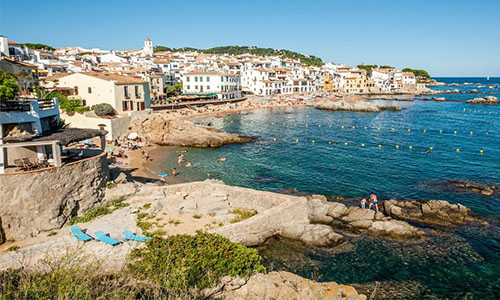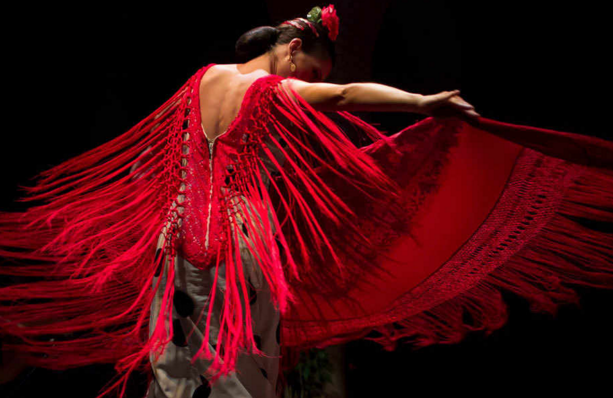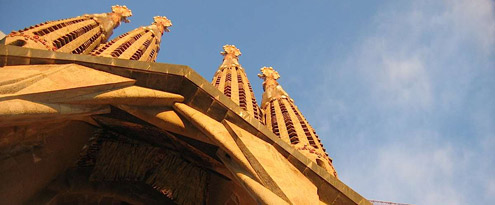A Comprehensive Travel Guide: Madrid and Toledo
This guide provides a detailed itinerary for a rich cultural journey from Spain's vibrant capital, Madrid, to the historic, UNESCO World Heritage city of Toledo. Often called the "City of Three Cultures," Toledo offers a stark and beautiful contrast to Madrid's modern energy, making this combination a perfect introduction to the heart of Spain.
Introduction: Madrid and Toledo
Madrid, the capital of Spain, is a bustling metropolis known for its elegant boulevards, sprawling parks, world-class art museums, and vibrant nightlife. It is a city that pulses with life from early morning until long after midnight. Just a short journey south, Toledo stands as a living museum, perched on a hill above the Tagus River. Its labyrinthine streets tell stories of a past where Christians, Muslims, and Jews lived and worked together, leaving behind an unparalleled architectural and cultural legacy. A trip from Madrid to Toledo is a journey through time, from the dynamic present to a profoundly resonant past.
Part 1: Madrid - The Spanish Capital
Madrid is a city that demands to be experienced with all the senses. Visitors should prepare for days filled with artistic masterpieces and nights filled with culinary delights and lively conversation.
Key Attractions in Madrid
The Prado Museum (Museo Nacional del Prado): One of the world's premier art galleries, the Prado houses an unparalleled collection of European art, with a particular emphasis on Spanish masters like Velázquez, Goya, and El Greco. Key works to see include Velázquez's "Las Meninas" and Goya's "The Third of May 1808."
Royal Palace (Palacio Real): The official residence of the Spanish Royal Family, though now used primarily for state ceremonies. With over 3,000 rooms, it is one of the largest palaces in Europe. The tour includes lavish rooms like the Throne Room, the Royal Armory, and the Pharmacy.
Retiro Park (Parque del Buen Retiro): A 125-hectare green oasis in the heart of the city. Locals and tourists alike come here to row boats on the lake, see exhibitions at the Palacio de Cristal (Crystal Palace), enjoy street performers, and simply relax.
Puerta del Sol and Plaza Mayor: Puerta del Sol is considered the center of Spain, marked by the "Kilometer Zero" plaque. It's a bustling square and a major transport hub. A short walk away is the magnificent Plaza Mayor, a grand, arcaded square built during the Habsburg period, surrounded by cafes and restaurants.
Reina Sofía Museum: Home to Spain's national collection of 20th-century art, this museum is famous for housing Pablo Picasso's monumental anti-war masterpiece, "Guernica." It also features works by Dalí and Miró.
Madrid Food & Drink
Madrid's food scene is a celebration of Spanish cuisine.
Cocido Madrileño: A hearty chickpea-based stew, perfect for a cold day.
Bocata de Calamares: A simple but iconic sandwich of fried squid rings in a crusty baguette, often enjoyed in the bars around Plaza Mayor.
Churros con Chocolate: The classic Madrid breakfast or late-night snack. Dip fried dough churros into a thick, rich cup of hot chocolate. Chocolatería San Ginés is the most famous spot, open 24 hours.
Tapas Hopping: Explore the neighborhoods of La Latina (Cava Baja street) or Las Letras for a "tapeo," moving from bar to bar, sampling small plates like patatas bravas, jamón ibérico, and tortilla española.
Getting Around Madrid
Madrid has an excellent and affordable public transportation system.
Metro: The Madrid Metro is extensive, efficient, and easy to navigate. It is the fastest way to travel across the city.
Bus: The EMT bus network covers the entire city and is useful for routes not served by the metro, offering great views along the way.
Walking: The city center is very walkable, with many major attractions located within a reasonable distance of each other.
Taxi & Ride-Sharing: Readily available and reasonably priced compared to other European capitals.
Accommodation Tips for Madrid
Choosing the right neighborhood is key to your Madrid experience.
Centro (Sol / Huertas): Ideal for first-time visitors who want to be in the middle of the action. It can be noisy but puts you steps away from major sights.
Salamanca: An upscale neighborhood known for its designer shopping, fine dining, and elegant atmosphere.
Chueca & Malasaña: Trendy, vibrant districts full of independent boutiques, hip cafes, and a lively nightlife scene. Great for a younger crowd or those seeking a bohemian vibe.
La Latina: A historic and charming area, famous for its Sunday flea market (El Rastro) and its concentration of excellent tapas bars.
Part 2: Day Trip to Toledo - The Imperial City
A day trip to Toledo is an essential part of any visit to central Spain. It is easily accessible from Madrid and offers a completely different atmosphere.
Transportation: Madrid to Toledo and Back
By High-Speed Train (AVE): The fastest and most comfortable option. Trains depart from Madrid's Atocha station and arrive at Toledo's stunning station in approximately 30 minutes. The station is a short bus or taxi ride from the historic city center. Booking in advance is recommended for better prices.
By Bus: A more economical option. Buses depart from Madrid's Plaza Elíptica station and take about 1 to 1.5 hours, dropping passengers near the historic center of Toledo. Companies like ALSA operate this route frequently.
By Car: The drive takes about an hour, but parking within the walled city can be extremely challenging and expensive. It is often easier to park in a lot outside the walls and walk or take local transport in.
Organized Tours: Many companies offer day tours from Madrid, which include transportation and a guide. This is a hassle-free option for those who prefer not to plan the logistics.
Key Attractions in Toledo
Toledo's compact historic center is best explored on foot, getting lost in its narrow, winding streets.
Toledo Cathedral (Catedral Primada): A magnificent Gothic cathedral that took over 250 years to build. Its interior is breathtaking, featuring an enormous altarpiece, the transparente (a unique Baroque feature), El Greco's paintings in the sacristy, and a treasury filled with priceless artifacts.
Alcázar of Toledo: A massive square fortress that dominates the Toledo skyline. It now houses the Army Museum (Museo del Ejército), which details Spain's military history. The views from the top are spectacular.
Monastery of San Juan de los Reyes (Monasterio de San Juan de los Reyes): A stunning Franciscan monastery built by the Catholic Monarchs, Ferdinand and Isabella, to commemorate their victory. The cloisters are a masterpiece of Isabelline Gothic architecture.
Synagogue of Santa María la Blanca & El Tránsito Synagogue: These two synagogues are powerful testaments to Toledo's Jewish past. Santa María la Blanca, with its forest of white pillars and Moorish-style arches, highlights the cultural fusion of the city. El Tránsito houses the Sephardic Museum.
Church of Santo Tomé: Home to El Greco's most famous painting, "The Burial of the Count of Orgaz." This masterpiece is a must-see for any art lover.
Museo del Greco: Dedicated to the life and work of the painter Doménikos Theotokópoulos, known as El Greco, who spent much of his life in Toledo. The museum recreates his home and displays several of his key works.
Toledo Food & Drink
Toledo's cuisine is heavily influenced by its inland location and medieval past.
Carcamusas: The most typical Toledo dish—a hearty stew made with pork, peas, tomatoes, and spices, usually served in a small casserole dish.
Perdiz Estofado (Partridge Stew): A rich and gamey stew that is a local delicacy, often cooked with wine and herbs.
Mazapán (Marzipan): Toledo is famous for its marzipan, a sweet confection made from almonds and sugar. Santo Tomé is the most renowned convent and shop to buy authentic marzipan.
Queso Manchego: The famous sheep's milk cheese from the La Mancha region surrounding Toledo. It's often served with membrillo (quince paste).
A Suggested One-Day Itinerary for Toledo
Start early to make the most of your day.
Morning (9:00 AM - 1:00 PM): Enter the city through the Bisagra Gate. Head straight to the Plaza del Ayuntamiento to see the exterior of the Cathedral. Then, visit the Church of Santo Tomé to see "The Burial of the Count of Orgaz." Afterwards, explore the Synagogue of Santa María la Blanca and the Monastery of San Juan de los Reyes.
Lunch (1:00 PM - 3:00 PM): Enjoy a traditional lunch at a restaurant in the old town. Try Carcamusas or partridge stew.
Afternoon (3:00 PM - 6:00 PM): Visit the interior of the magnificent Toledo Cathedral. Then, walk to the Alcázar for panoramic views of the city and explore the Army Museum if time permits. Alternatively, visit the El Greco Museum.
Late Afternoon (6:00 PM onwards): Wander through the charming streets, shop for Damascene metalwork (a local craft) or marzipan souvenirs. For a final breathtaking view, walk to the Mirador del Valle across the river (accessible by bus, taxi, or a long walk) to see the city illuminated at dusk.
Part 3: Returning to Madrid
The return journey is straightforward. If you took the train, ensure you know the schedule for the last trains back to Madrid. The station in Toledo is modern but has limited services, so it's best to arrive with some time to spare. Upon arriving back in Madrid at Atocha station, you can easily connect to the metro or find a taxi to your accommodation.
Cultural Insights and Travel Tips
Siesta & Late Dining: Many smaller shops may close in the afternoon (roughly 2-5 PM). Spaniards dine late; lunch is typically around 2-4 PM and dinner rarely starts before 9 PM.
Tipping: Tipping is not as customary or large as in some countries. In restaurants, it's common to leave small change or round up the bill by 5-10%. For excellent service, a little more is appreciated.
Language: While English is spoken in tourist areas, learning a few basic Spanish phrases (Hola, Gracias, Por favor, La cuenta) will be greatly appreciated.
Shopping: Look for VAT refund forms if you are a non-EU resident and spending over a certain amount. In Toledo, typical souvenirs include Damascene jewelry, marzipan, and steel replicas of swords and armor.
Sightseeing Passes: Consider the "Madrid Card" or "Paseo del Arte" pass for discounted entry to multiple museums. For Toledo, some combined attraction tickets are available online.
Comfortable Shoes: This itinerary involves a significant amount of walking, especially on Toledo's cobblestone streets which can be steep and uneven.
Conclusion
The journey from Madrid to Toledo encapsulates the diverse soul of Spain. Madrid offers the thrill of a modern European capital—a city of art, passion, and relentless energy. Toledo provides a profound historical counterpoint—a silent, stone-clad poem to centuries of intertwined cultures. By experiencing both, travelers gain a deeper, more nuanced understanding of this fascinating country. This dual-destination trip promises an unforgettable adventure filled with artistic treasures, culinary delights, and timeless beauty.



